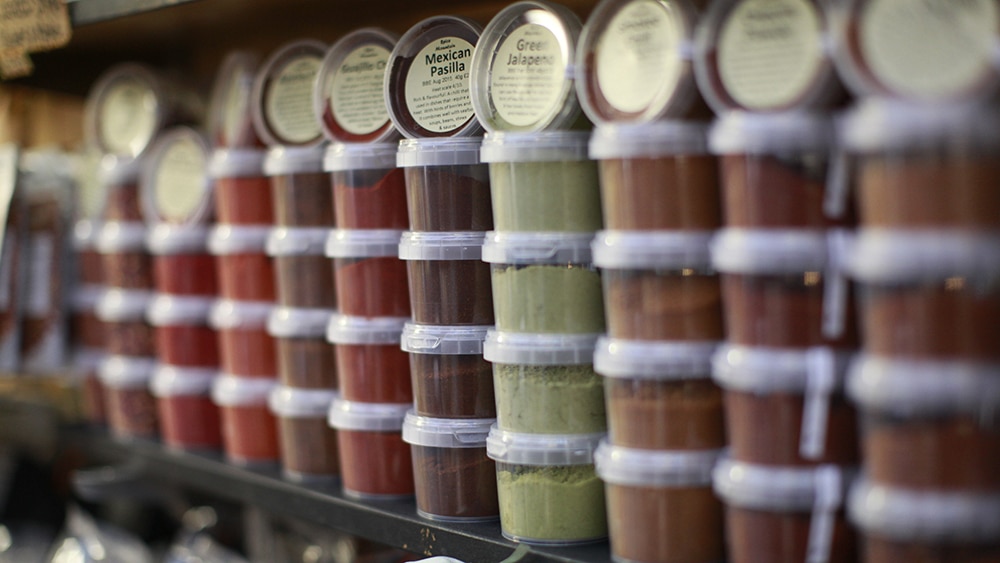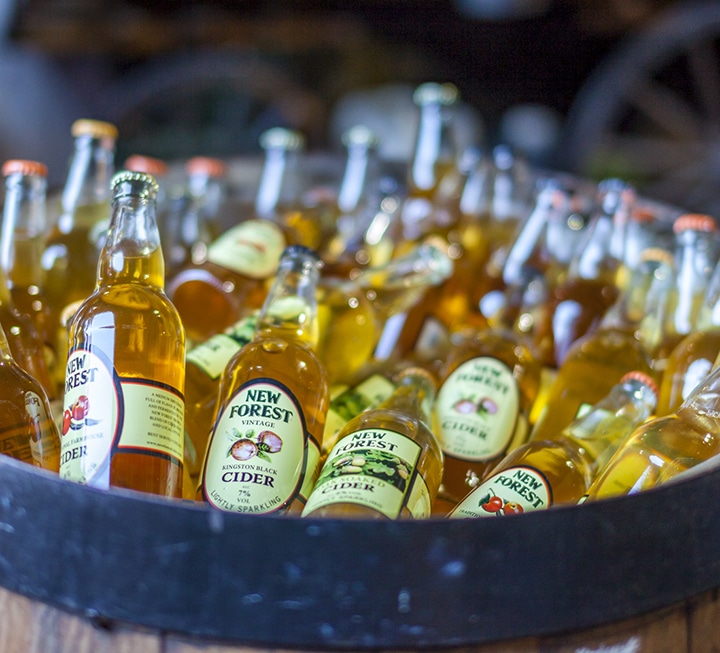What it takes: making spice blends
Magali Russie of Spice Mountain on the art of selecting and blending spices


“WITH MOST SPICES, AS SOON AS YOU OPEN A SAMPLE PACK, YOUR NOSE WILL TELL YOU HOW GOOD IT IS”
Interview: Clare Finney
How do you go about selecting the raw spices you use in your blends?
Getting the right spices is key to what we do. Take cumin seeds, for example: at Spice Mountain we only buy them from a particular supplier who specialises in cumin seeds; he doesn’t deal in any other spices. He offers us several gradings of cumin seeds – because not all cumin is the same. Its quality depends on its essential oil content, its size and its shape. The oilier the seeds, the fresher the taste will be. The highest grade we sell either as whole or ground cumin, but the second grade is good for mixing into spice blends. It’s like making juice out of misshapen apples – while the taste is extremely important, those buying blended spice mixes are less concerned about the size and shape of the original seeds.
How can you tell if a spice is of sufficiently high quality?
With most spices, as soon as you open a sample pack, your nose will tell you how good it is. Some spices you may need to bite on as well: a little bite of cumin, coriander or fennel seeds will tell you if they’re fresh or old. With those spices that aren’t so easy to smell, like mustard seeds, it’s a matter of looking at the spec sheet, which comes with each sample and shows the oil content of the seed and various other results from lab testing.
There are visual clues, too: at the moment we have Sri Lankan cinnamon sticks on the stall; they’re really small and thin, which means the quality is far greater than the bigger ones that customers often assume are better. Cinnamon bark is shaved off the tree and left to dry and curl naturally. The producers then layer the sheets by hand and roll them like cigars. The tighter the rolls, the better and more intense the flavour will be. If it’s a big, thick roll, it’s too loose.
Who do you buy spices from?
Most spices I buy from suppliers. It is not realistic to buy direct from the farmers. It is not like sourcing vegetables in the UK: I can’t just buy cumin from one farm – or if I did, I’d have to buy it by the tonne. I do, though, insist that the spices I buy have been sourced from the particular countries or regions that do them best. Our turmeric, for example, comes the Gujarat region of India and our lemongrass comes from Indonesia. We have built very close relationships with the importers. We’re going to be hit a lot harder by Brexit than people imagine, because the main European hubs for spice suppliers are still in Holland and Germany.

How do you get ideas for new spice blends?
Through travelling, reading and listening to our customers. Our customers are hugely varied in background, and also eat out a lot! We get lots of feedback and suggestions as to blends and variations we could make. It’s a constant conversation.
How do you devise the recipes for your blends?
A big part of what we do is trial and error, but there’s a lot of knowledge too. I don’t want to be vain, but I’ve learnt a great deal through sampling and selling spices for so many years, and I’ve developed a real feel for the proportions you need, particularly of certain strong spices. Cumin and coriander, for example, are sort of brother and sister spices, in a way. Cumin is a strong, domineering spice and coriander has a distinct flavour that some people really don’t like. The two tend to work beautifully together, but only if you get the balance right.
How important is the roasting process?
The balancing of certain spices – including cumin and coriander – often happens when you roast them. It’s then that the flavours really amalgamate. Before roasting you can taste them separately, but somehow afterwards it’s like the two spices have joined forces to create a new one. You can really taste the effects of roasting on Ethiopian blends: the spices are roasted for a long time, which means they develop a gorgeous, smoky flavour. But I don’t always roast spices, and sometimes I mix roasted and non-roasted. We rarely roast fennels seeds, for example – fennel is so lovely, it really doesn’t need anything doing to it. We’re making a Goan curry blend at the moment, and the challenge is making something gentle, mellow and woody, but with a nice sweetness. Powdered fennel seeds provide sweetness, cinnamon is sweet but woody, so those two seem to work well together.
How do you test your blends?
When we’re creating a new blend, we will use it to make a particular dish a number of times to check that it works consistently. Even after a blend has been perfected, though, it is really important not to neglect the testing, because the profile of the spices can change. The heat of the chilli can vary, for example – we might get a batch that is not so spicy – and we see turmeric changing all the time. Sometimes it’s the most beautiful shade of bright yellow, other times it’s darker. Each time that happens, we have to retest the blend, as the taste of the turmeric tends to vary with the colour. It helps that I use the blends in my own cooking – especially the Mauritian curry, Ethiopian and shichimi togarashi blends – and that my partner tries everything I make!
Are there any spice blends you can’t make?
We have had a lot of people asking about the merkén spice blend recently – it’s a smoky, peppy blend from Chile – but the main ingredient in that is aji cacho de cabra, a hot smoked chilli, and you can’t reliably get this chilli yet in the UK. Sometimes with spice blends you can cheat a little by substituting one specific ingredient with another if the profile is similar enough, but you can’t in the case of merkén. The chilli makes its flavour. Without it, it’s not merkén.


